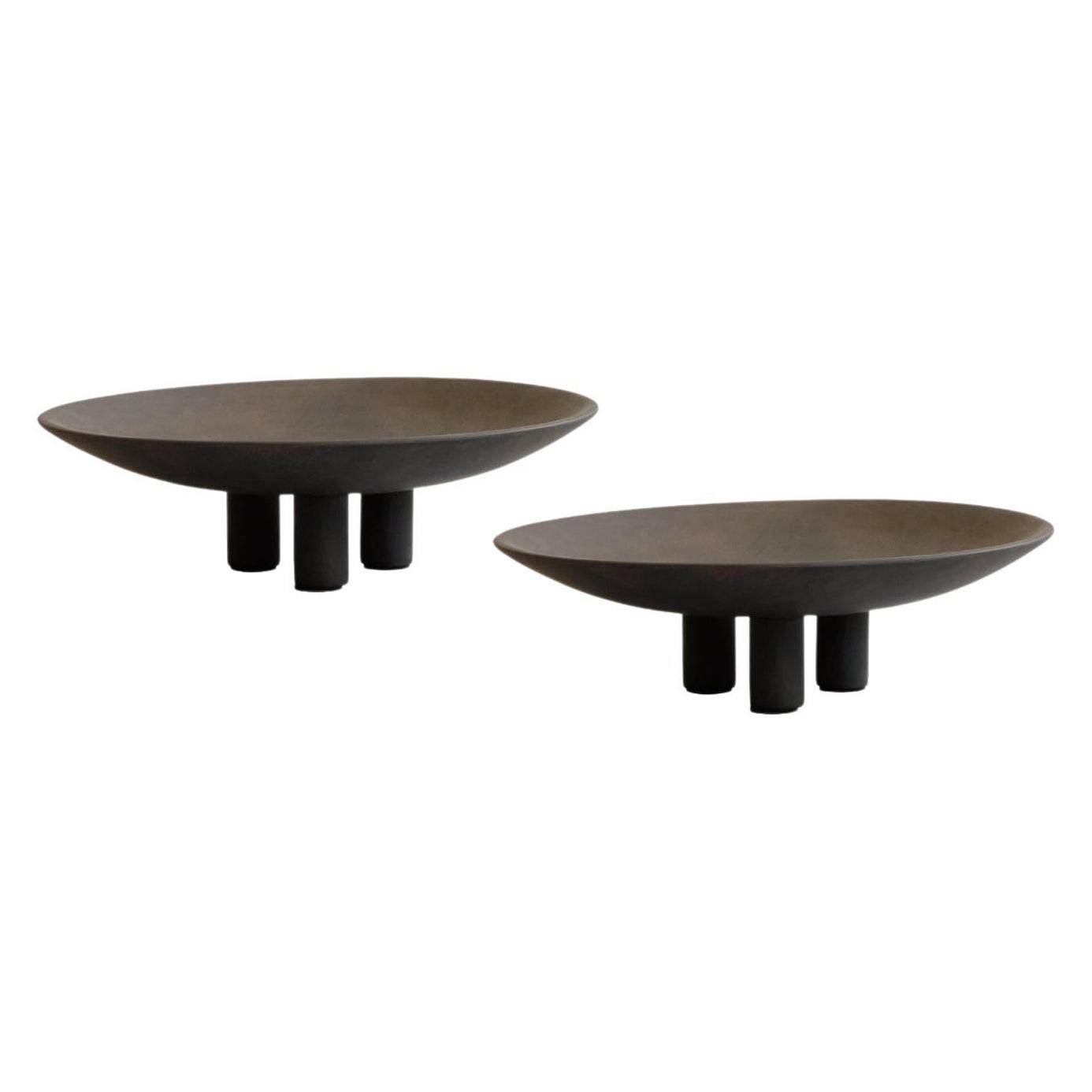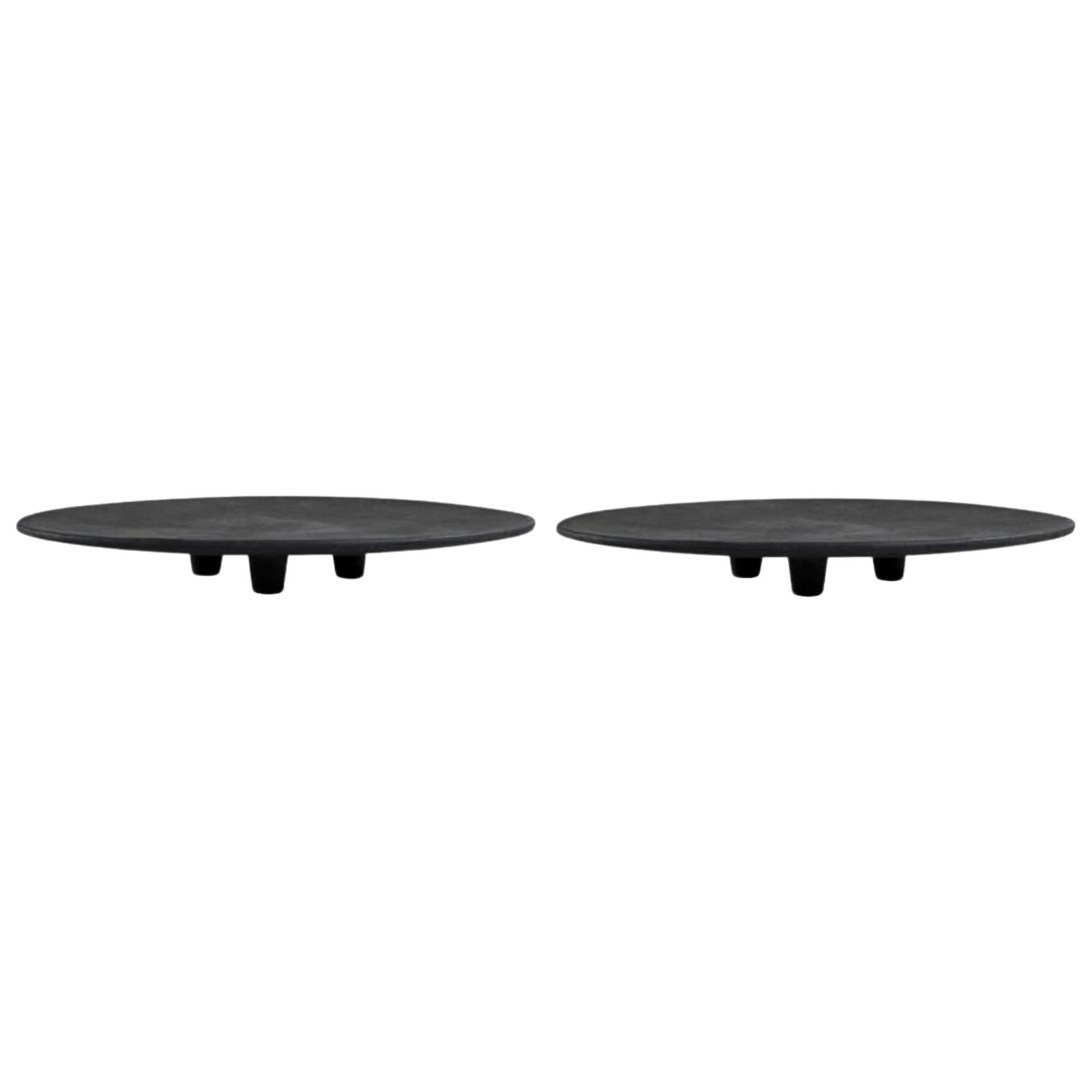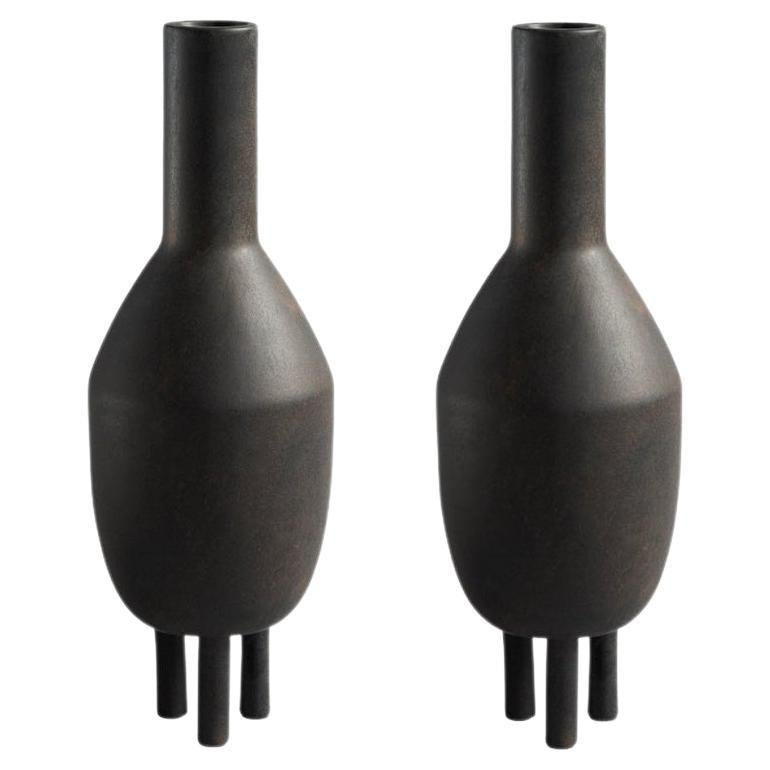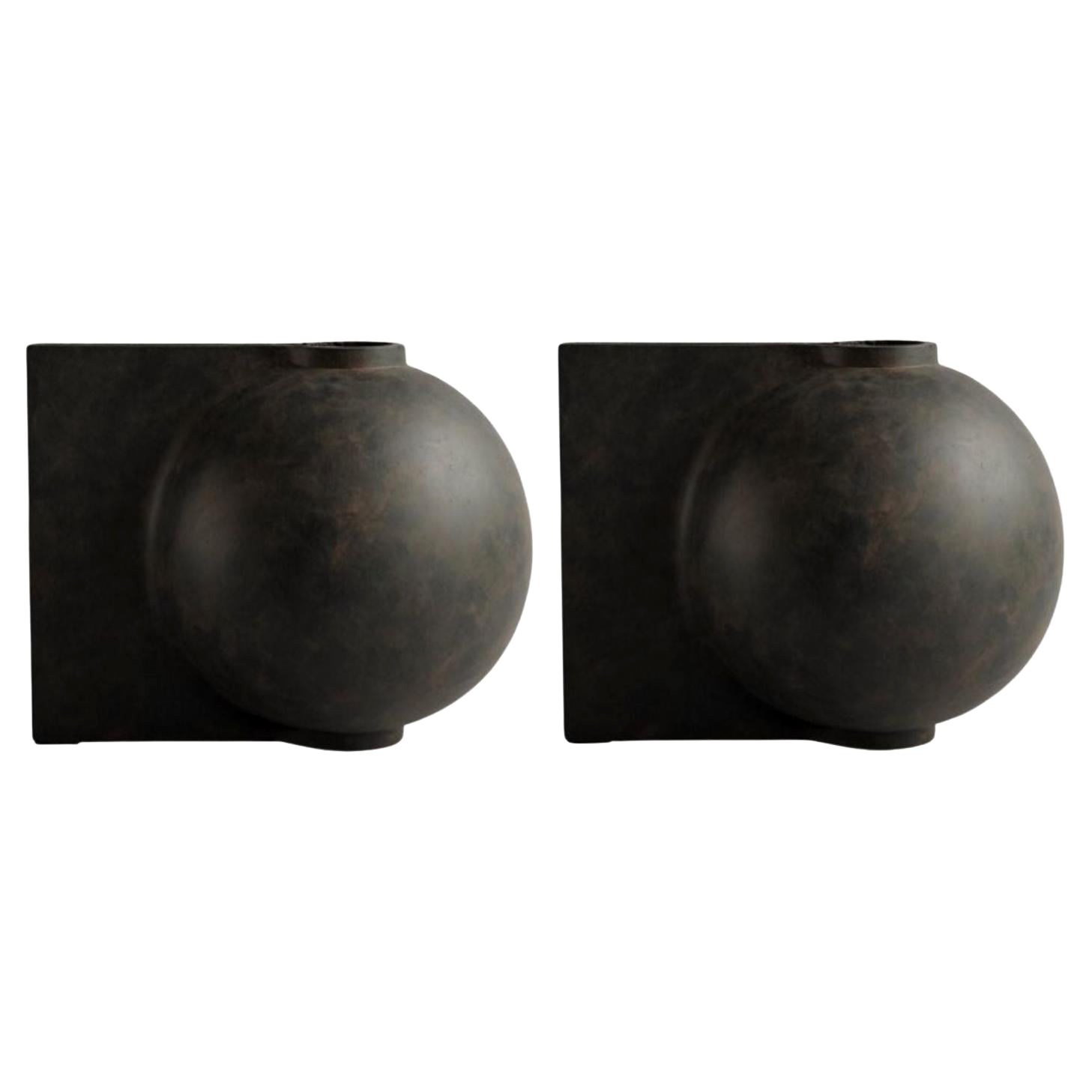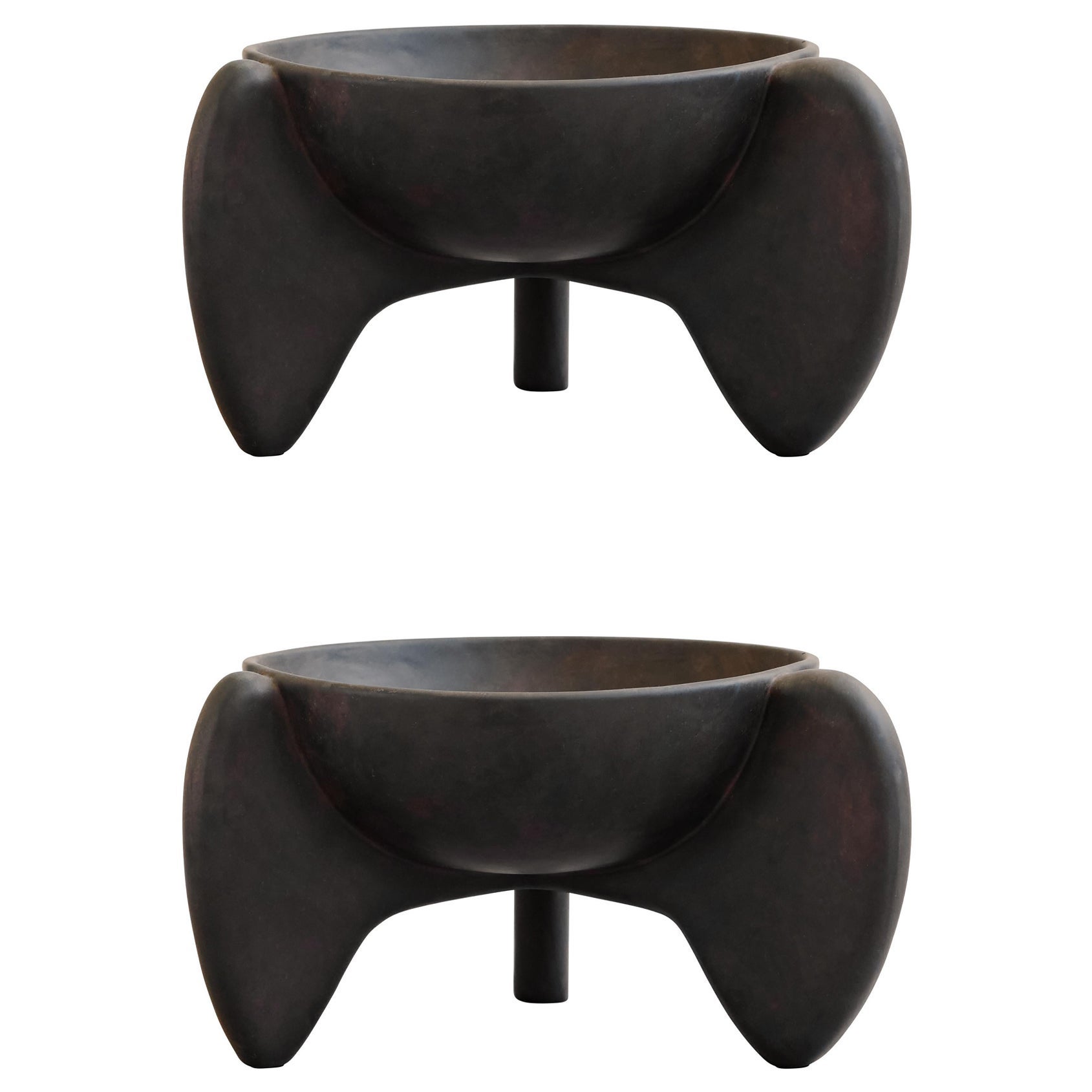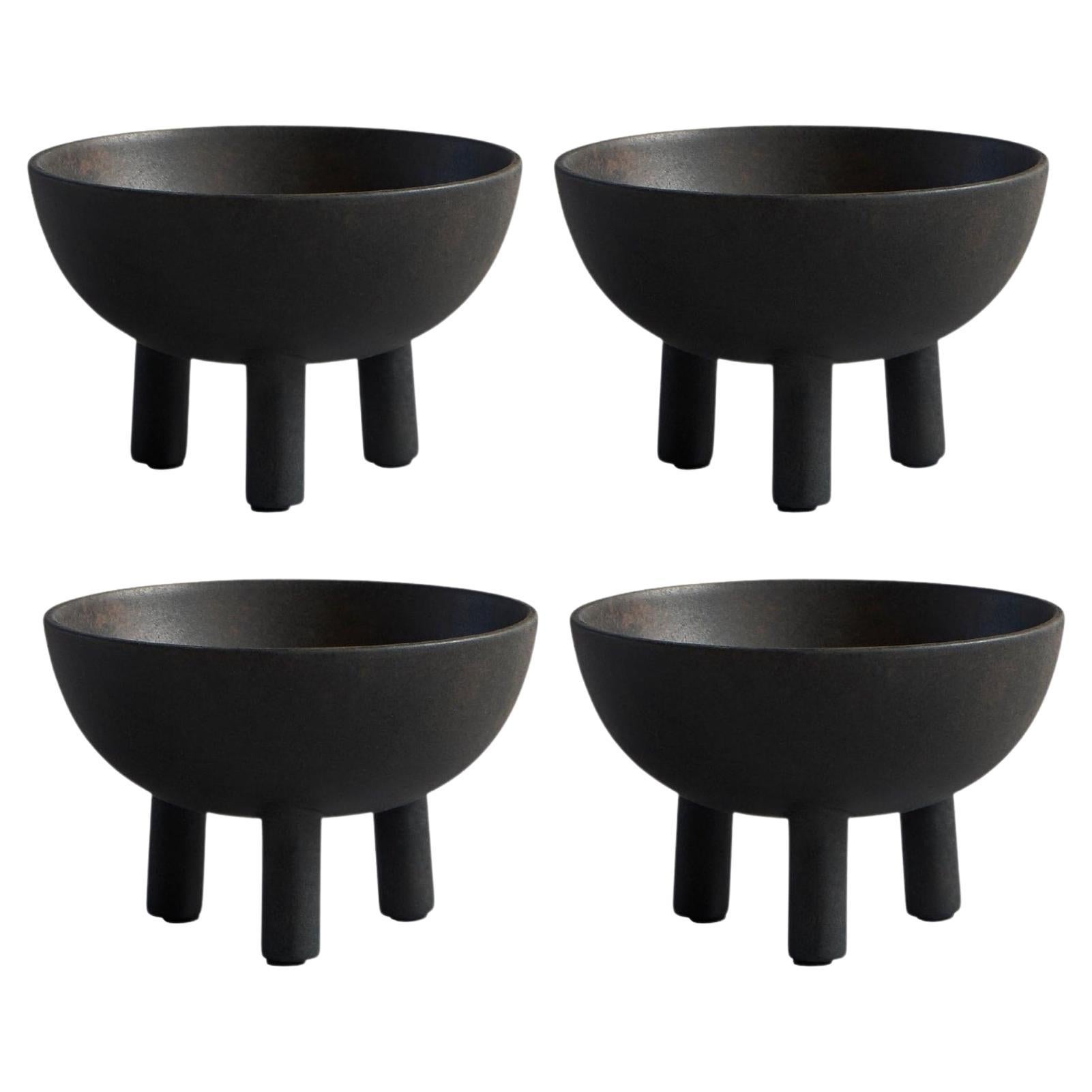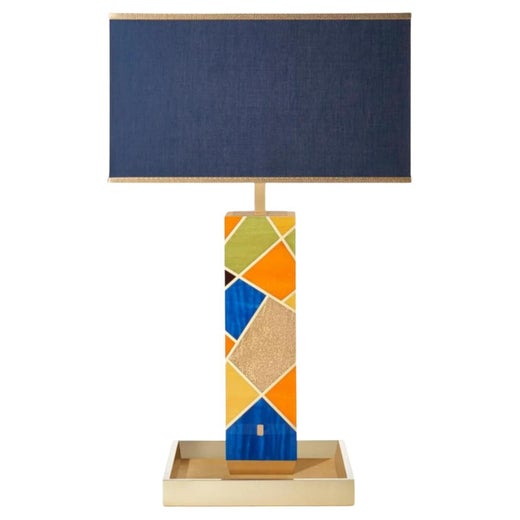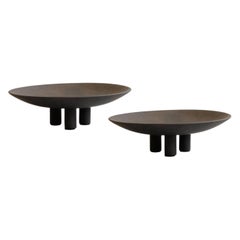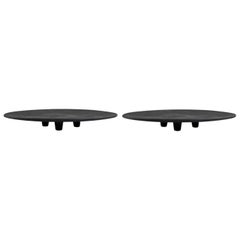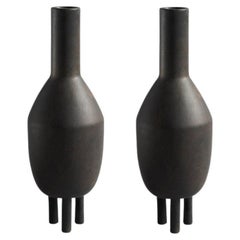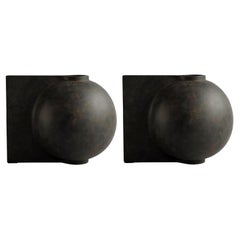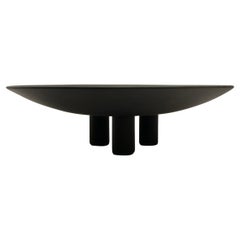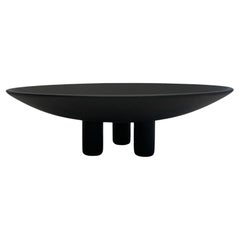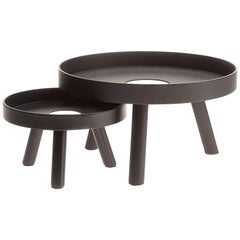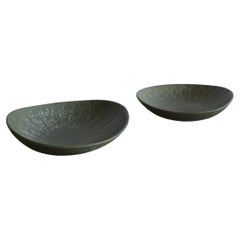Items Similar to Set of 2 Coffee Duck Plate Big by 101 Copenhagen
Want more images or videos?
Request additional images or videos from the seller
1 of 7
Set of 2 Coffee Duck Plate Big by 101 Copenhagen
$794.76per set
£588.03per set
€660per set
CA$1,098.90per set
A$1,206.46per set
CHF 629.41per set
MX$14,599.80per set
NOK 7,888.69per set
SEK 7,433.22per set
DKK 5,025.26per set
Quantity
About the Item
A set of 2 coffee duck plate big by 101 Copenhagen
Designed by Kristian Sofus Hansen & Tommy Hyldahl
Dimensions: L45 / W45 / H13 CM
Materials: Ceramic
Reminiscent of little, individual three-legged characters or friendly creatures, the Duck series is a playful and exuberant addition to more minimalist series of treys, vases, bowls, pots, jars and plates in a modern interior. Yet, true to the design manifest of 101 Copenhagen, the collection is held in natural colours to fit into the scandinavian home. Duck comes in various shapes, sizes and colours - like individual family members gathered around a table. As it is a hand glazed natural product, the colours may vary slightly.
101 Copenhagen is a Danish design brand founded in 2017. With a vision to honor exquisite quality and craftsmanship, the collection encompasses furniture, lighting and accessories in a timeless, yet modern design. With a true passion for materials and refined textures, organic shapes and colours, 101 Copenhagen presents the epitome of classics and must-have novelties for Scandinavian and international interior connoisseurs alike.
- Dimensions:Height: 5.12 in (13 cm)Width: 17.72 in (45 cm)Depth: 17.72 in (45 cm)
- Sold As:Set of 2
- Style:Modern (Of the Period)
- Materials and Techniques:
- Place of Origin:
- Period:
- Date of Manufacture:2021
- Production Type:New & Custom(Current Production)
- Estimated Production Time:5-6 weeks
- Condition:
- Seller Location:Geneve, CH
- Reference Number:1stDibs: LU1219231886662
Galerie Philia
Galerie Philia is an international contemporary sculptural design and art gallery representing emerging and established designers and artists. The gallery is the brainchild of two brothers who share a lifetime passion for art, literature and philosophy. Their distinct academic background sets them apart from their peers, as it sees them following a rhizomatic and transcultural approach in the way they select works. This involves combining elements from multiple cultures in what becomes a network of harmoniously interconnected roots, ultimately revealing the beauty of each unique creation. The gallery’s non-hierarchical curation sits apart from the ephemerality of trends and focuses instead on the true aesthetic quality of the piece – alluring and timeless. Unlike others, Galerie Philia does not focus on a single style – whether minimalist, organic or raw – but rather embraces heterogeneity. The Galerie Philia takes pride in discovering new talents, providing them with multiple international platforms to showcase their latest creations. As well as propelling the newest generation of 21st century collectible design, Galerie Philia also works with internationally known design artists. Galerie Philia has a strong international presence, with galleries in Geneva, New York and Singapore. In addition to their permanent spaces, the gallery organizes temporary group exhibitions and artists residencies in first-class locations around the world.
Made to order are possible, please contact us.
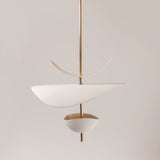
About the Seller
5.0
Recognized Seller
These prestigious sellers are industry leaders and represent the highest echelon for item quality and design.
Diamond Seller
Premium sellers with a 4.7+ rating and 24-hour response times
Established in 2015
1stDibs seller since 2015
5,047 sales on 1stDibs
Typical response time: <1 hour
- ShippingRetrieving quote...Shipping from: Stahnsdorf, Germany
- Return Policy
Authenticity Guarantee
In the unlikely event there’s an issue with an item’s authenticity, contact us within 1 year for a full refund. DetailsMoney-Back Guarantee
If your item is not as described, is damaged in transit, or does not arrive, contact us within 7 days for a full refund. Details24-Hour Cancellation
You have a 24-hour grace period in which to reconsider your purchase, with no questions asked.Vetted Professional Sellers
Our world-class sellers must adhere to strict standards for service and quality, maintaining the integrity of our listings.Price-Match Guarantee
If you find that a seller listed the same item for a lower price elsewhere, we’ll match it.Trusted Global Delivery
Our best-in-class carrier network provides specialized shipping options worldwide, including custom delivery.More From This Seller
View AllSet of 2 Coffee Duck Plate Mini by 101 Copenhagen
Located in Geneve, CH
A set of 2 coffee duck plate miniby 101 Copenhagen
Designed by Kristian Sofus Hansen & Tommy Hyldahl
Dimensions: L30 / W30 / H9,5 cm
Materials: Ceramic
...
Category
2010s Danish Modern Vases
Materials
Ceramic
Set of 2 Duck Trays Big by 101 Copenhagen
Located in Geneve, CH
Set of 2 duck trays big by 101 Copenhagen
Designed by Nicolaj Nøddesbo & Tommy Hyldahl
Dimensions: L60 / W60 / H10 CM
Materials: Fiber Concrete
The Duck ser...
Category
2010s Danish Modern Tableware
Materials
Concrete
$1,059 / set
Set of 2 Coffee Duck Vase Slim by 101 Copenhagen
Located in Geneve, CH
A set of 2 coffee duck vase slim by 101 Copenhagen
Designed by Kristian Sofus Hansen & Tommy Hyldahl
Dimensions: L 17 / W 17 / H 45 cm
Materials: Ceramic
...
Category
2010s Danish Modern Vases
Materials
Ceramic
Set of 2 Coffee Offset Vases Big by 101 Copenhagen
Located in Geneve, CH
Set of 2 coffee offset vases big by 101 Copenhagen.
Designed by Nicolaj Nøddesbo & Tommy Hyldahl.
Dimensions: L 60 / W 40 / H 48 cm.
Materials: fiber concrete.
Offset is design...
Category
2010s Danish Modern Vases
Materials
Concrete
Set of 2 Coffee Wing Bowl Big by 101 Copenhagen
Located in Geneve, CH
A set of 2 coffee wing bowl big by 101 Copenhagen
Designed by Kristian Sofus Hansen & Tommy Hyldahl
Dimensions: L36 / W36 / H20 CM
Materials: Ceramic
It is all about gravity an...
Category
2010s Danish Modern Vases
Materials
Ceramic
Set of 4 Coffee Duck Bowl Big by 101 Copenhagen
Located in Geneve, CH
A set of 4 coffee duck bowl big by 101 Copenhagen
Designed by Kristian Sofus Hansen & Tommy Hyldahl
Dimensions: L 16 / W 16 / H 11 CM
Materials: Ceramic
Rem...
Category
2010s Danish Modern Vases
Materials
Ceramic
You May Also Like
Dark Coffee Color Danish Design Platter, China, Contemporary
Located in New York, NY
Contemporary Danish design large round footed platter.
Base is three cylinder shapes.
Matte dark coffee colored glaze.
One of a collection of many sh...
Category
21st Century and Contemporary Chinese Decorative Dishes and Vide-Poche
Materials
Ceramic
Dark Coffee Color Mini Three Footed Platter, China, Contemporary
Located in New York, NY
Contemporary Danish design mini round footed platter.
Base is three cylinder shapes.
Matte dark coffee colored glaze.
Larger sizes also available (S6623 and S6624 ).
One of a collec...
Category
21st Century and Contemporary Chinese Decorative Dishes and Vide-Poche
Materials
Ceramic
fferrone Pair of Contemporary Black Serving Trays Decorative Sculpture
By Felicia Ferrone
Located in Chicago, IL
Lift and lift, too - set of two
Simple. Elegant. Minimalist. The contemporary black serving trays titled Lift collection will redefine the landscap...
Category
21st Century and Contemporary American Modern Serving Pieces
Materials
Steel
A set of two Plates by Carl-Harry Stålhane, Rörstrand ca 1950
By Carl-Harry Stålhane, Rörstrand
Located in Farsta, SE
A set of two Plates by Carl-Harry Stålhane, Rörstrand ca 1950
Two beautiful small plates with a lovely multicolored glaze.
Model SDG.
Heigth: 4 cm/1.5 inch
Diameter: 14-15cm/5.5-5...
Category
Mid-20th Century Swedish Scandinavian Modern Ceramics
Materials
Ceramic, Stoneware
Karin Björquist for Gustavsberg, Large Candlesticks-Dish for Eight Lights
Located in København, Copenhagen
Karin Björquist for Gustavsberg, large candlestick-dish for eight lights.
Sweden, circa 1970.
Beautiful royal blue glaze.
Marked.
Measures 27.5 x 2.5 cm.
In perfect c...
Category
Vintage 1970s Swedish Scandinavian Modern Candlesticks
$240 Sale Price
20% Off
Hertha Bengtson for Rörstrand, Two Koka Serving Dishes in Stoneware
Located in København, Copenhagen
Hertha Bengtson (1917-1993) for Rörstrand.
Two Koka serving dishes in glazed stoneware. 1960s.
Largest measures: 36.5 x 24 cm.
In excellent condition.
Stamped.
For almost half ...
Category
Vintage 1960s Swedish Scandinavian Modern Platters and Serveware
Materials
Stoneware
Read More
Galerie Philia Unveils Limited-Edition Designs at Giampiero Tagliaferri’s New L.A. Studio
For the exhibition “Materia Perpetua,” the gallery asked an international group of makers — including Tagliaferri — to explore the possibilities of a surprisingly versatile material: onyx.
Galerie Philia Doesn’t Just Discover Fresh Design Talent — It Grows It
With an impressive slate of international exhibitions, the Geneva-based gallery raises the profiles of emerging designers.
